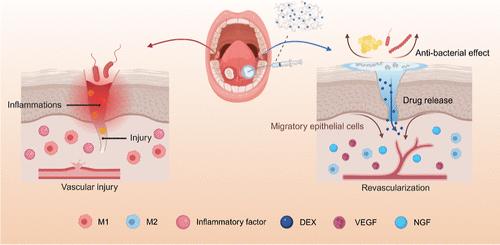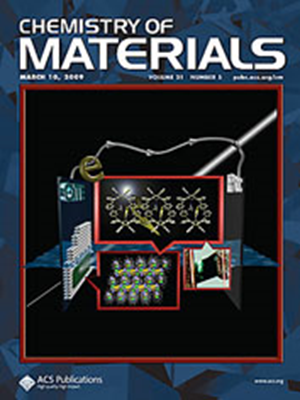Drug-Loaded Janus Dressings Precipitated from PEG–PTMC Thermosensitive Hydrogel for Oral Ulcer Treatment
IF 7.2
2区 材料科学
Q2 CHEMISTRY, PHYSICAL
引用次数: 0
Abstract
Oral ulcers, prevalent lesions of the oral mucosa, often stem from trauma, viral infections, and autoimmune diseases, necessitating effective treatment strategies to address both their physical and psychological impacts. Current treatments are often limited by issues such as poor adhesion and rapid dilution within the dynamic oral environment. To overcome these challenges, we have explored the application of thermosensitive hydrogels, specifically aqueous solutions of poly(ethylene glycol)–poly(trimethylene carbonate) (PEG–PTMC) copolymers. These copolymers are noted for their biocompatibility and temperature-responsive phase transition properties. We engineered a thermosensitive drug delivery system by fine-tuning the molecular weight and segment lengths of PEG–PTMC, which gels near 32 °C and precipitates at 37 °C. Utilizing the slight temperature differential between the oral mucosa and ambient air, the system forms a Janus structure with distinct gel and precipitate layers, ensuring sustained drug release and enhanced tissue adhesion. This innovative formulation not only acts as a protective, drug-laden dressing that promotes healing but is also designed for ease of use, allowing for self-administration. This study presents a significant advancement in the treatment of oral ulcers, offering a promising solution through the in situ formation of a bilayered, drug-loaded dressing, leveraging the unique properties of thermosensitive hydrogels.

求助全文
约1分钟内获得全文
求助全文
来源期刊

Chemistry of Materials
工程技术-材料科学:综合
CiteScore
14.10
自引率
5.80%
发文量
929
审稿时长
1.5 months
期刊介绍:
The journal Chemistry of Materials focuses on publishing original research at the intersection of materials science and chemistry. The studies published in the journal involve chemistry as a prominent component and explore topics such as the design, synthesis, characterization, processing, understanding, and application of functional or potentially functional materials. The journal covers various areas of interest, including inorganic and organic solid-state chemistry, nanomaterials, biomaterials, thin films and polymers, and composite/hybrid materials. The journal particularly seeks papers that highlight the creation or development of innovative materials with novel optical, electrical, magnetic, catalytic, or mechanical properties. It is essential that manuscripts on these topics have a primary focus on the chemistry of materials and represent a significant advancement compared to prior research. Before external reviews are sought, submitted manuscripts undergo a review process by a minimum of two editors to ensure their appropriateness for the journal and the presence of sufficient evidence of a significant advance that will be of broad interest to the materials chemistry community.
 求助内容:
求助内容: 应助结果提醒方式:
应助结果提醒方式:


